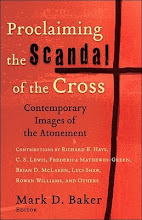
The creation account in Genesis chapter one didn’t emerge out of a vacuum. There were already mythologies about creation that would have been available in the ancient near east and Africa. The Babylonians had the Enuma Elish, which described a violent, cosmic battle among the gods, who, after tearing each other to shreds, created human beings to do all their work for them. Egyptian and central African cosmologies have primordial deities who vomit things into existence. Quite a lovely image.
I find it interesting that people want to interpret Genesis chapter one scientifically rather than artistically. Genesis is an iron-age creation, written over a period of time when science, at least as we have come to understand it, did not exist. Ancient writers knew how to write things that were procedural, methodological, and structural (think of God’s directives in the construction of Noah’s ark, or of Solomon’s temple).
But the creation account isn’t that way. It flows like poetry, it dances to hidden music, it tells a story that is prone to melody and song.
It is also deeply theological, something we often miss when trying to force it into a creationistic-scientific box.
There is something different at play with this story that sets it apart from those that came before it. Creation is not the result of divine nausea, nor are human beings fashioned in order to be slaves of the gods. The emergence of the universe comes because God speaks the words of creation. He forms human beings to reflect God’s own image as male and female. And then he calls it all good.
This is grand artistry.
There are some radical declarations in this theatrical theology. Creation might come ex nihilo—out of nothing—but it doesn’t come as a result of the self-focused infighting of the petty gods. There is a rhymic peacefulness to the account as God seems to gently say, “Let there be . . .”
The Egyptians put the sun god Ra at the top of the divine hierarchy. They saw this god traversing the sky on a daily basis, and served under the power of his avatar, Pharaoh. But Genesis topples that connection between god and sun, and demotes the sun to the fourth day of creation.
The most ancient of the Hebrew people—the ones who were liberated from their slavery in Egypt—would have remembered the old cosmologies. They also would have remembered that the God declared by Moses—the I AM of the burning bush—was the one who defeated the gods of Egypt and brought about the rescue of his people.
One of the most radical revelations of Genesis one is that it links the God of Israel’s rescue to the God who created all things (keep in mind: The Exodus took place long before the writing of Genesis). The I AM was no territorial god who happened to be stronger than the others in the neighborhood. There were, in reality, no other gods in the first place. The God of rescue and the God of all creation was—and is—the same God.
Only an artist could really tell that story. Good theology—the kind that liberates and reveals—is best when it is art. Too much of our current theology is dominated by thinking that tries to be scientific. Once our precisely constructed, immoveable theologies are crafted, we then crash people against them. We sometimes act as though humans were created for theology, rather than the other way around.
There are a number of theological artists in our day who are asking new questions. It’s too bad that we burn some of them at our respective stakes. That’s a tremendous loss to us all because we need the artists to remind us who we are and from where we’ve come. We need artists to help us as we hope for God’s intended future. Part of their role among us is to ask disturbing questions about our certainties and help us explore new possibilities that we might have missed along the way. Scientists deal in facts and tangible realities, and I’m glad we have them. But in theological reflection we need more artists than scientists. We need a more robust theological imagination among us than we’ve had in recent years.
We need more theological artists.























No comments:
Post a Comment